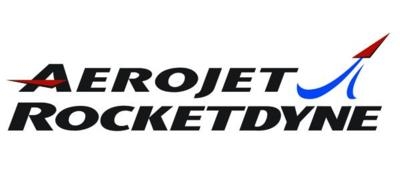Wed, Jun 25, 2014
Company Says '3D Printing' Can Make Engine Construction More Cost Effective
Aerojet Rocketdyne Aerojet recently successfully completed a series of hot-fire tests on a Bantam demonstration engine built entirely with additive manufacturing. The tests were a key step in the development of a more cost-effective engine family for booster, upper-stage and in-space propulsion.

"The demonstration of this engine, made completely with additive manufacturing, is another significant milestone in our path to changing propulsion affordability," said Jay Littles, director of Advanced Launch Propulsion Programs at Aerojet Rocketdyne. "We are not just making a stand-alone chamber or injector derived from traditional design approaches. Rather, we are integrating the full capability of additive manufacturing processes to evolve a proven, reliable, affordable design. We are doing so with technical depth and rigor to meet our unparalleled quality and safety requirements."
The engine, which is normally comprised of dozens of parts, consisted of only three additive-manufactured components: the entire injector and dome assembly; the combustion chamber; and a throat and nozzle section. This particular liquid oxygen/kerosene engine, dubbed "Baby Bantam" (because it is at the lower end of the Bantam engine family thrust range), has a thrust of 5,000 pounds. The Bantam engine family extends up to 200,000 pounds of thrust and can be adapted to use various fuels, including: kerosene, ethanol, methane and storable propellants.
The Bantam engine family is being adapted from the proven design of the Atlas Sustainer engine to take full advantage of additive manufacturing capabilities. The team also was able to reduce total design and manufacturing time from more than a year to a couple of months, reduce the cost of the engine by approximately 65 percent. This engine test was part of a multi-year Aerojet Rocketdyne additive manufacturing development effort that already has demonstrated successful process development, design tool evolution, component fabrication and component hot-fire tests.
More News
Airport Marking Aids Markings used on runway and taxiway surfaces to identify a specific runway, a runway threshold, a centerline, a hold line, etc. A runway should be marked in ac>[...]
"It is extremely difficult, if not impossible, for manned aircraft to see a drone while conducting crop-enhancing and other aerial applications at low altitudes and high speeds. We>[...]
Aero Linx: The Skyhawk Association The Skyhawk Association is a non-profit organization founded by former Skyhawk Pilots which is open to anyone with an affinity for the A-4 Skyhaw>[...]
“The T-54A benefits from an active Beechcraft King Air assembly line in Wichita, Kansas, where all required METS avionics and interior modifications are installed on the line>[...]
Aero Linx: Aerostar Owners Association The Association offers the Aerostar Owner a unique opportunity to tap an invaluable source of information concerning the care and feeding of >[...]
 ANN's Daily Aero-Term (04.28.24): Airport Marking Aids
ANN's Daily Aero-Term (04.28.24): Airport Marking Aids Aero-News: Quote of the Day (04.28.24)
Aero-News: Quote of the Day (04.28.24) ANN's Daily Aero-Linx (04.28.24)
ANN's Daily Aero-Linx (04.28.24) Aero-News: Quote of the Day (04.29.24)
Aero-News: Quote of the Day (04.29.24) ANN's Daily Aero-Linx (04.29.24)
ANN's Daily Aero-Linx (04.29.24)



